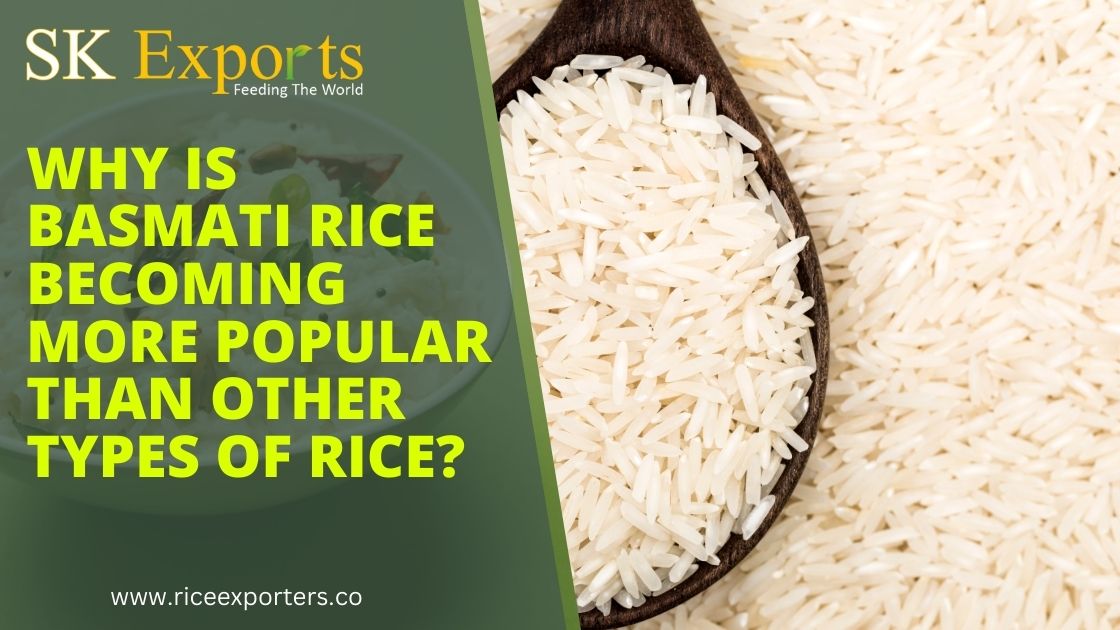Introduction:
In the diverse world of culinary treasures, rice reigns supreme as a beloved staple, offering sustenance and satisfaction across cultures and continents. Among the myriad rice varieties, Basmati rice stands as a beacon of culinary excellence, captivating palates with its tantalizing aroma, slender grains, and rich heritage. In recent years, Basmati rice has experienced an unprecedented surge in popularity, eclipsing other types of rice in the global market. Let us embark on a journey to unravel the enigma behind the meteoric rise of Basmati rice and explore the multifaceted factors that contribute to its unparalleled allure.
-
Exquisite Aroma and Flavor:
Basmati rice owes its allure to its enchanting aroma, which permeates the senses with a symphony of fragrances, ranging from floral notes to nutty undertones. The delicate aroma of Basmati rice not only tantalizes the olfactory senses but also adds depth and complexity to culinary creations, transforming ordinary dishes into extraordinary culinary experiences. Unlike conventional rice varieties, Basmati rice possesses a nuanced flavor profile that evolves with each bite, leaving a lasting impression on discerning palates.
Aroma Comparison Chart:
Rice Variety Aroma Intensity Flavor Notes Basmati High Floral, Nutty Jasmine Moderate Floral, Sweet Long Grain White Low Neutral -
Long and Slender Grains:
The hallmark of Basmati rice lies in its long, slender grains, which epitomize elegance and sophistication on the dining table. With grains that elongate upon cooking and remain distinct and fluffy, Basmati rice imparts a visual appeal to dishes, elevating their aesthetic allure. The unique texture and appearance of Basmati rice set it apart from other rice varieties, making it a preferred choice for culinary enthusiasts and connoisseurs alike.
Grain Comparison:
Rice Variety Grain Length (mm) Grain Width (mm) Basmati 7.5 – 9.0 1.5 – 2.0 Jasmine 6.5 – 7.5 1.3 – 1.5 Long Grain White 5.0 – 6.0 1.0 – 1.3 -
Cultural Heritage and Significance:
Basmati rice is deeply entrenched in the cultural fabric of regions where it is cultivated, such as the Indian subcontinent and parts of the Middle East. Revered for its association with festive celebrations, rituals, and traditional cuisines, Basmati rice occupies a revered position in the culinary traditions of these regions. The cultural significance of Basmati rice transcends borders, resonating with people of diverse backgrounds and culinary preferences, thereby fueling its widespread popularity.
-
Health Benefits and Nutritional Superiority:
Beyond its sensory delights, Basmati rice offers a plethora of health benefits, making it a preferred choice for health-conscious consumers. Basmati rice boasts a lower glycemic index compared to other rice varieties, making it suitable for individuals seeking to manage blood sugar levels and promote overall well-being. Rich in essential nutrients such as carbohydrates, protein, and fiber, Basmati rice serves as a wholesome source of sustenance, nourishing the body and mind alike. Furthermore, Basmati rice is naturally gluten-free and low in fat, making it an ideal dietary option for individuals with gluten sensitivities or those striving to maintain a balanced diet.
Nutritional Comparison:
Nutrient Basmati (per 100g) Jasmine (per 100g) Long Grain White (per 100g) Calories 210 200 210 Protein 5g 4g 4.2g Carbohydrates 45g 44g 45g Fiber 1g 0.6g 1.2g Fat 0.5g 0.5g 0.5g -
Culinary Versatility and Adaptability:
The culinary versatility of Basmati rice knows no bounds, as it seamlessly integrates into a myriad of culinary traditions and gastronomic creations. From aromatic biryanis and pilafs to savory risottos and refreshing rice salads, Basmati rice serves as a canvas for culinary innovation, accommodating a diverse range of flavors and ingredients. Its ability to absorb spices and aromatics while retaining its distinct character makes Basmati rice a favorite among chefs and home cooks seeking to elevate their culinary repertoire.
-
Sustainability and Environmental Considerations:
In an era marked by increasing environmental awareness, Basmati rice emerges as a sustainable agricultural choice, characterized by responsible cultivation practices and ecological stewardship. Basmati rice cultivation often employs traditional farming techniques that prioritize soil health, water conservation, and biodiversity preservation, thereby minimizing environmental impact. Additionally, the cultivation of Basmati rice supports rural livelihoods and sustains agricultural communities, fostering socio-economic development in regions where it is grown.
-
Quality Assurance and Authenticity:
Basmati rice commands consumer trust and loyalty by adhering to stringent quality standards and certifications that safeguard its purity and authenticity. Regulatory bodies and industry organizations play a pivotal role in ensuring the integrity of Basmati rice, implementing rigorous testing and certification protocols to uphold its premium status. Consumers gravitate towards trusted brands and suppliers that guarantee the authenticity and superior quality of Basmati rice, thus reinforcing its position as a premium culinary indulgence.
Conclusion:
In the kaleidoscope of culinary delights, Basmati rice shines as a luminous gem, revered for its captivating aroma, slender grains, cultural heritage, nutritional benefits, culinary versatility, sustainability, and uncompromising quality. As the epicenter of gastronomic innovation continues to evolve, Basmati rice stands as a timeless symbol of culinary excellence, transcending borders and captivating hearts and palates around the globe.
